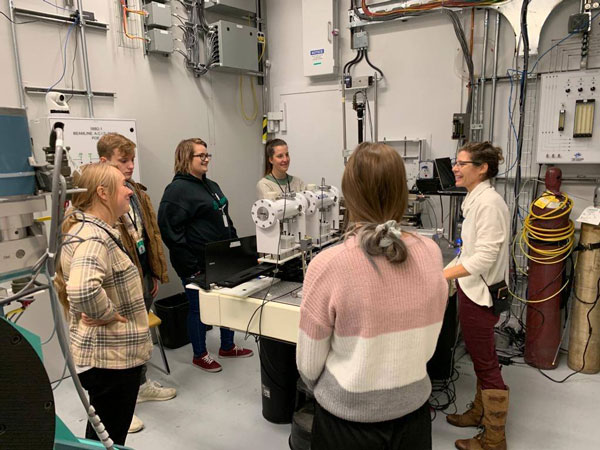
“We think provincially; we think regionally; we think sort of what we’re closer and familiar with and something like this can help us understand that we’re all in this together.” – Tracy Walker, CLS
A University of Saskatchewan (U of S) partnership is hoping to connect schools across Canada.
On Tuesday, the Canadian Light Source (CLS) announced it’s joining forces with the Mistik Askiwin Dendrochronology Laboratory (MAD Lab) for The Trans-Canadian Research and Environmental Education (TREE) program. The initiative aims to paint a picture of trembling aspen trees in different environments.
Grade six to eight students can participate in the national study by collecting samples and sending them in to be analyzed, as well as diving into the area’s environmental history. Then, they can compare their results to other participating schools.
Tracy Walker, education programs lead at CLS, said it’s best to learn science through hands-on experience—and not just in the classroom.
“There’s a lot of sort of isolation going on across Canada. We think provincially; we think regionally; we think sort of what we’re closer and familiar with and something like this can help us understand that we’re all in this together,” said Walker, adding it will help students find a common ground.
“Trees tell stories.”

Scientifically, the project allows U of S professor and Mad Lab director Colin Laroque to engage in larger scale research.
Without help from their “citizen scientists,” researchers wouldn’t have it their budget to collect samples from across Canada.
“Our reach is just astronomically higher because of this kind of a system,” said Laroque.
“We picked trembling aspen because it’s the most common tree in Canada, from coast to coast to coast,” he added. “It’s one of those trees that you could kind of find in every zone, whether you’re in Toronto or Vancouver or Vancouver Island or Halifax.”
He said a tree tells its story in its rings. You can tell if it’s gone through a drought, wildfire or flood, for example.
“We can go in and say this is a 50-year-old tree, but on year 46 this happened to the tree and we can kind of tell either chemically what happened to it or also the wide, narrow pattern of the tree rings tell you a little bit about how it grew up in its environment.”
Researchers hope to learn about what toxicants are in soils where the aspen trees grow, how much contamination the trees can tolerate and whether location influences the accumulation of toxicants. They also hope to answer if these factors relate to climatic or human events in the timespan of the tree.
According to a news release, the findings will be available to the public online at tree.lightsource.ca.
Teachers interested in participating in the TREE program are asked to email Walker at education@lightsource.ca or visit the website. There is no cost and all equipment to collect samples is provided.
Walker said teachers can use the educational resources on the website as they fits their classroom’s needs. The TREE program fits a variety of subjects, including science, math, social studies, languages and Indigenous perspectives.
The initiative is funded by the U of S, CLS and NSERC PromoScience.

